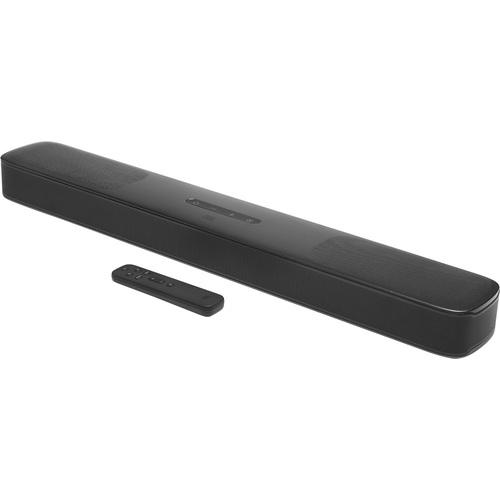 JBL Bar 300 5.0 Soundbar
JBL Bar 300 5.0 Soundbar

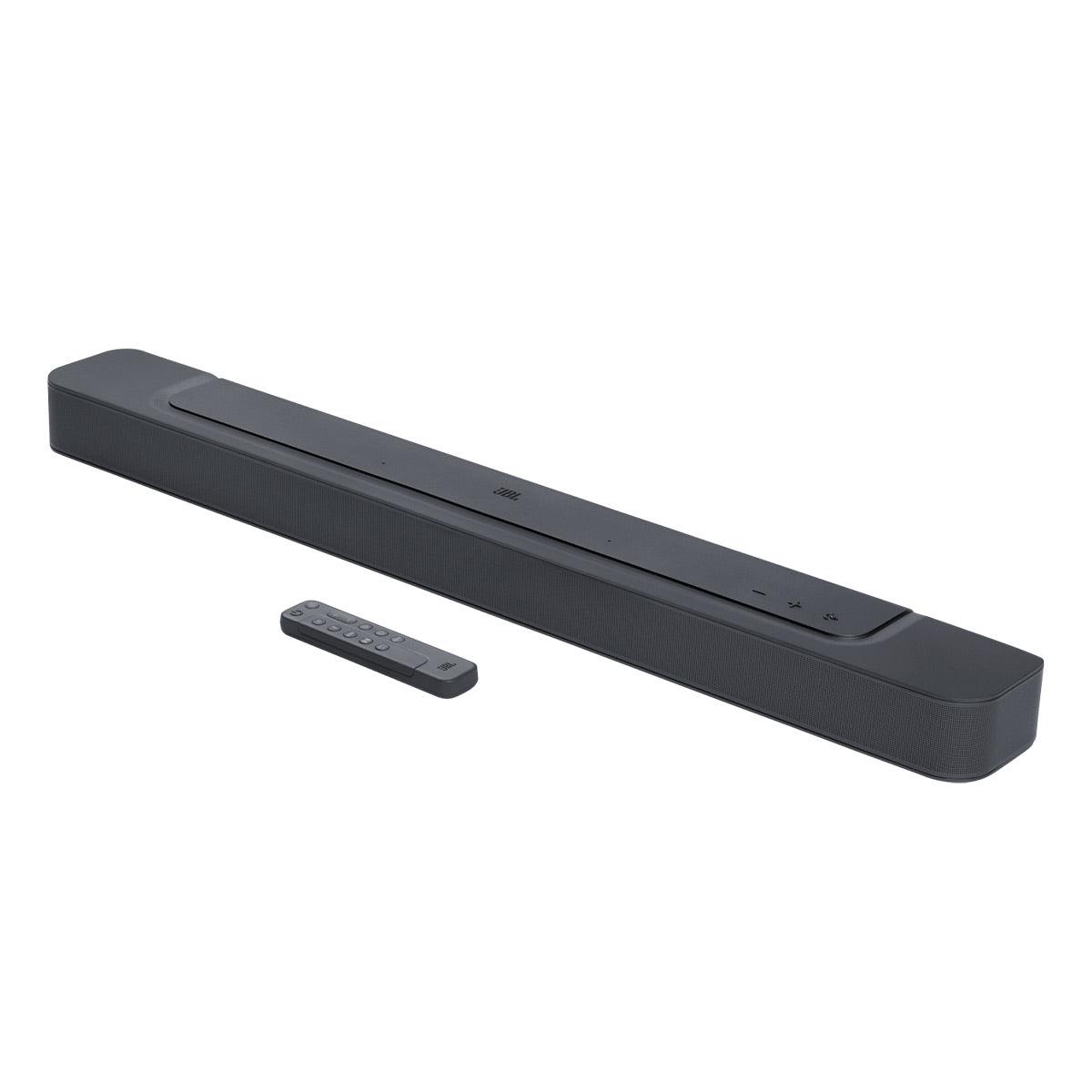
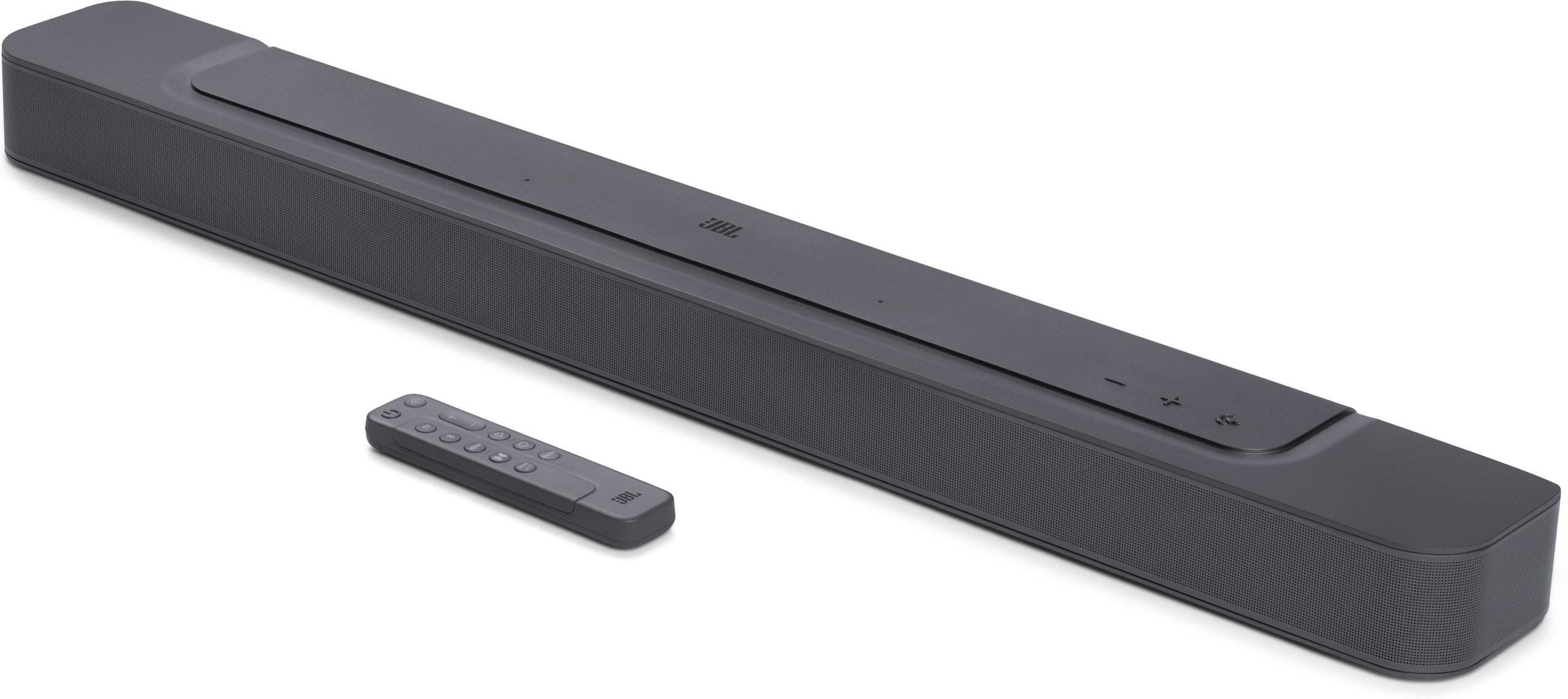

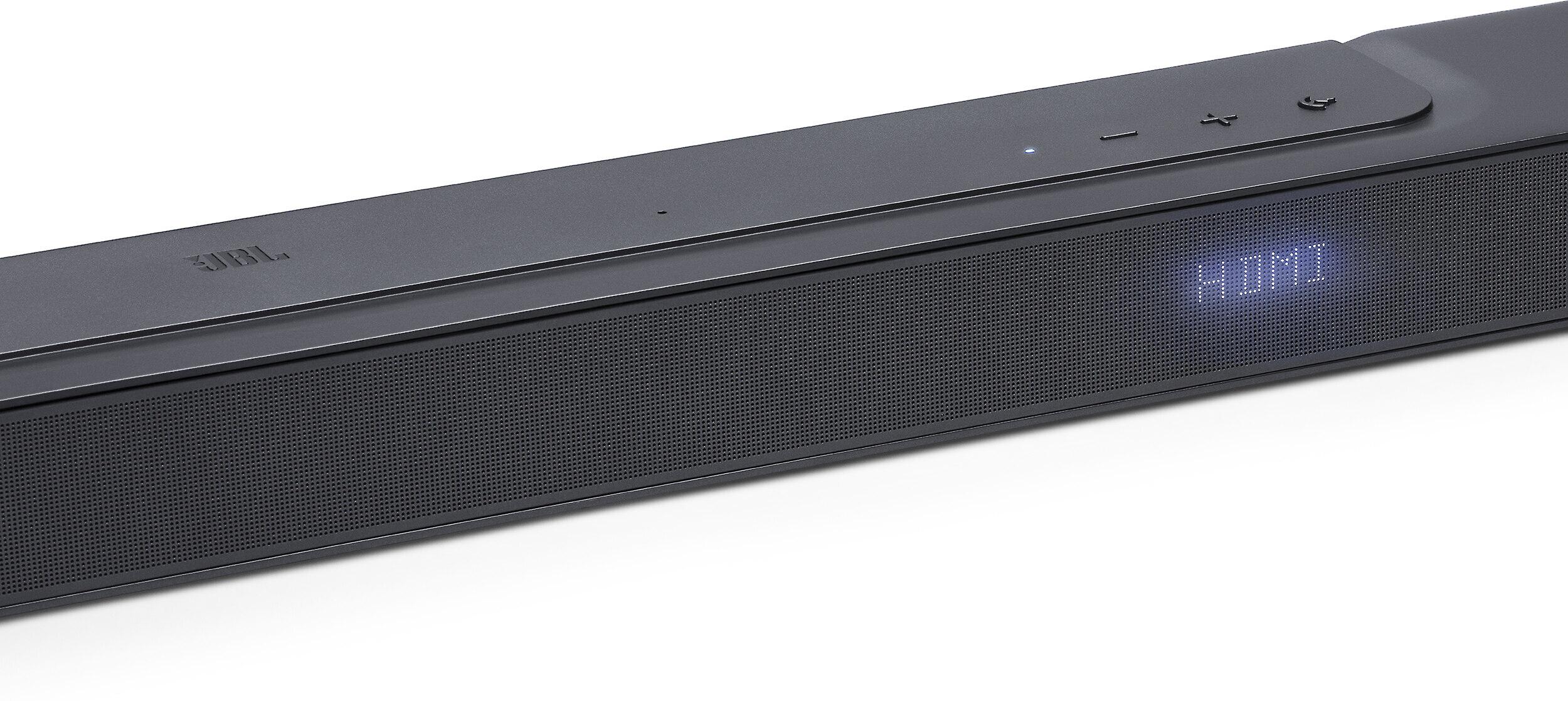
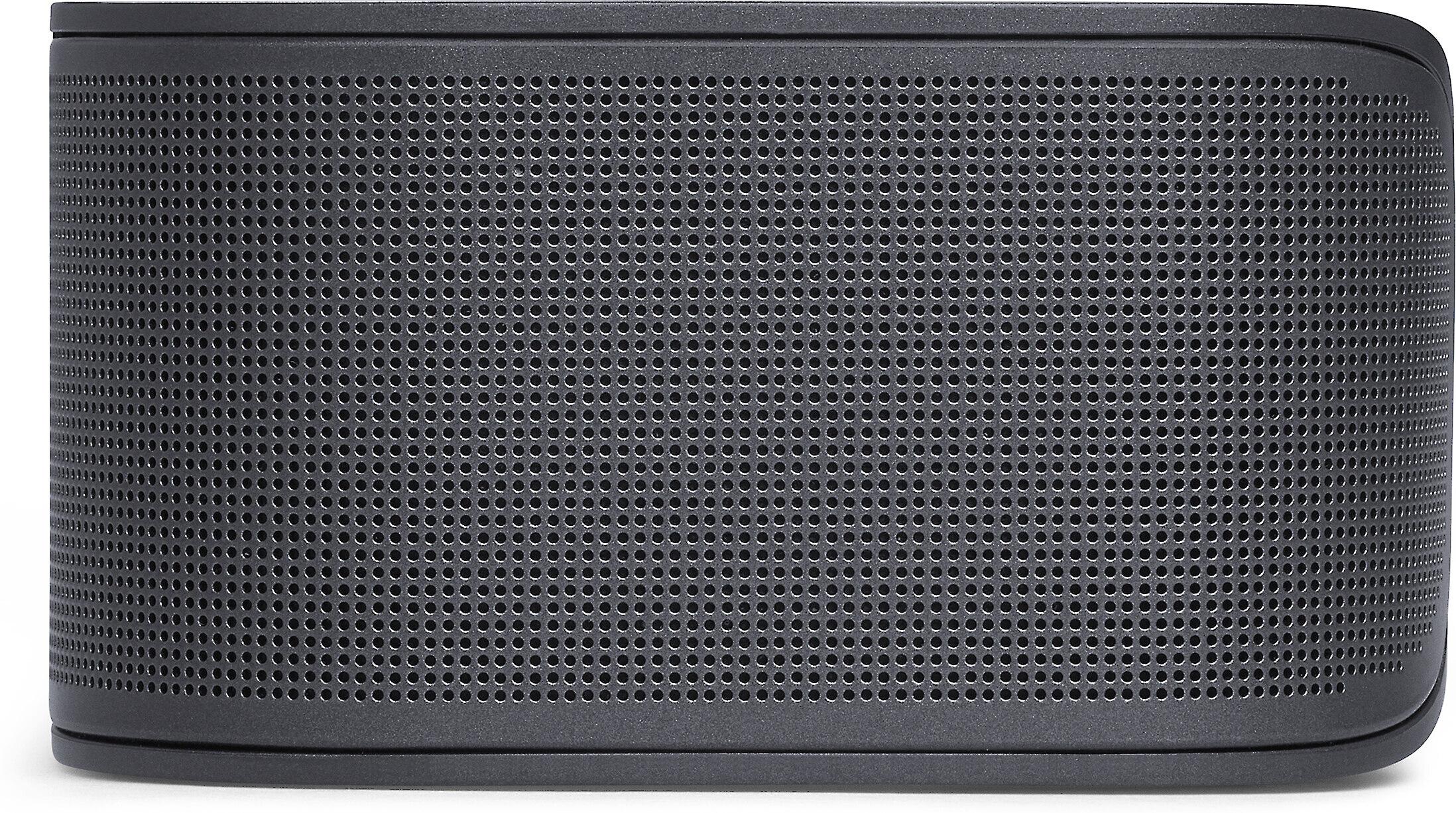
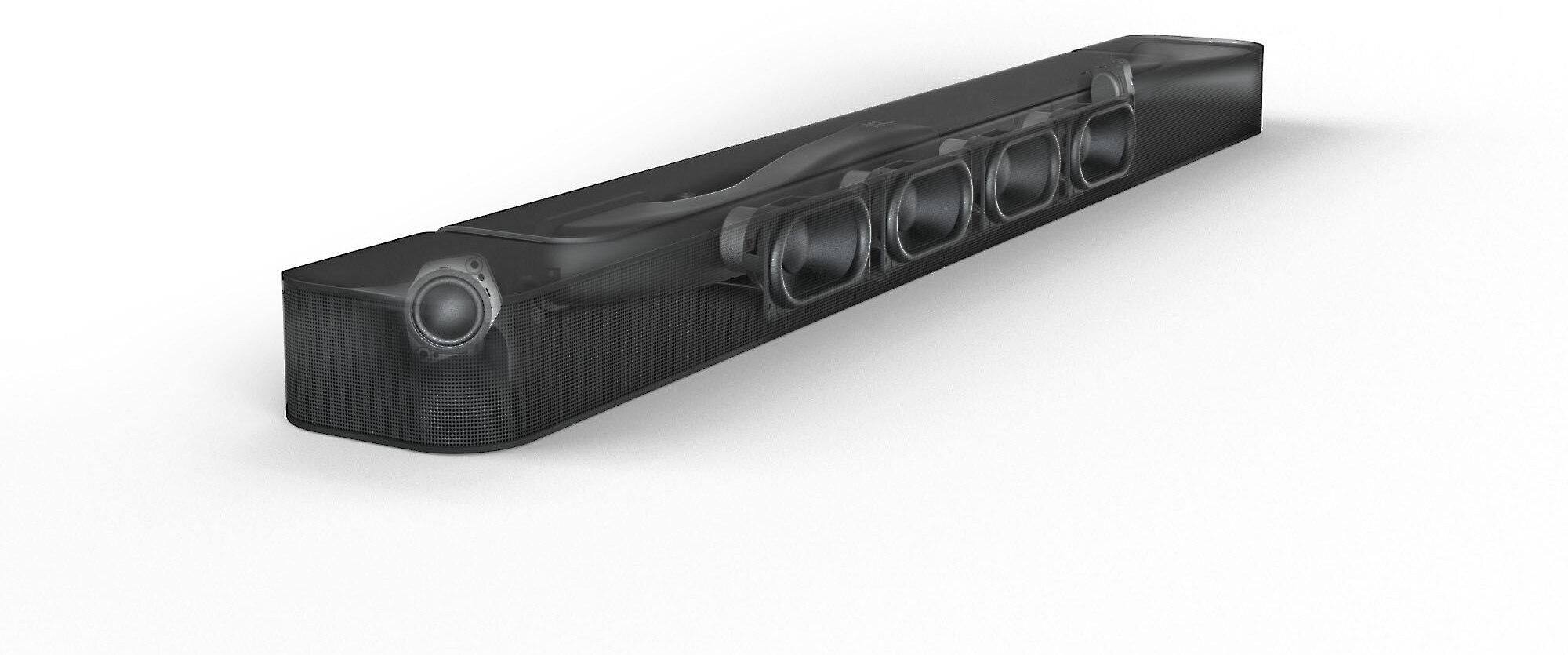
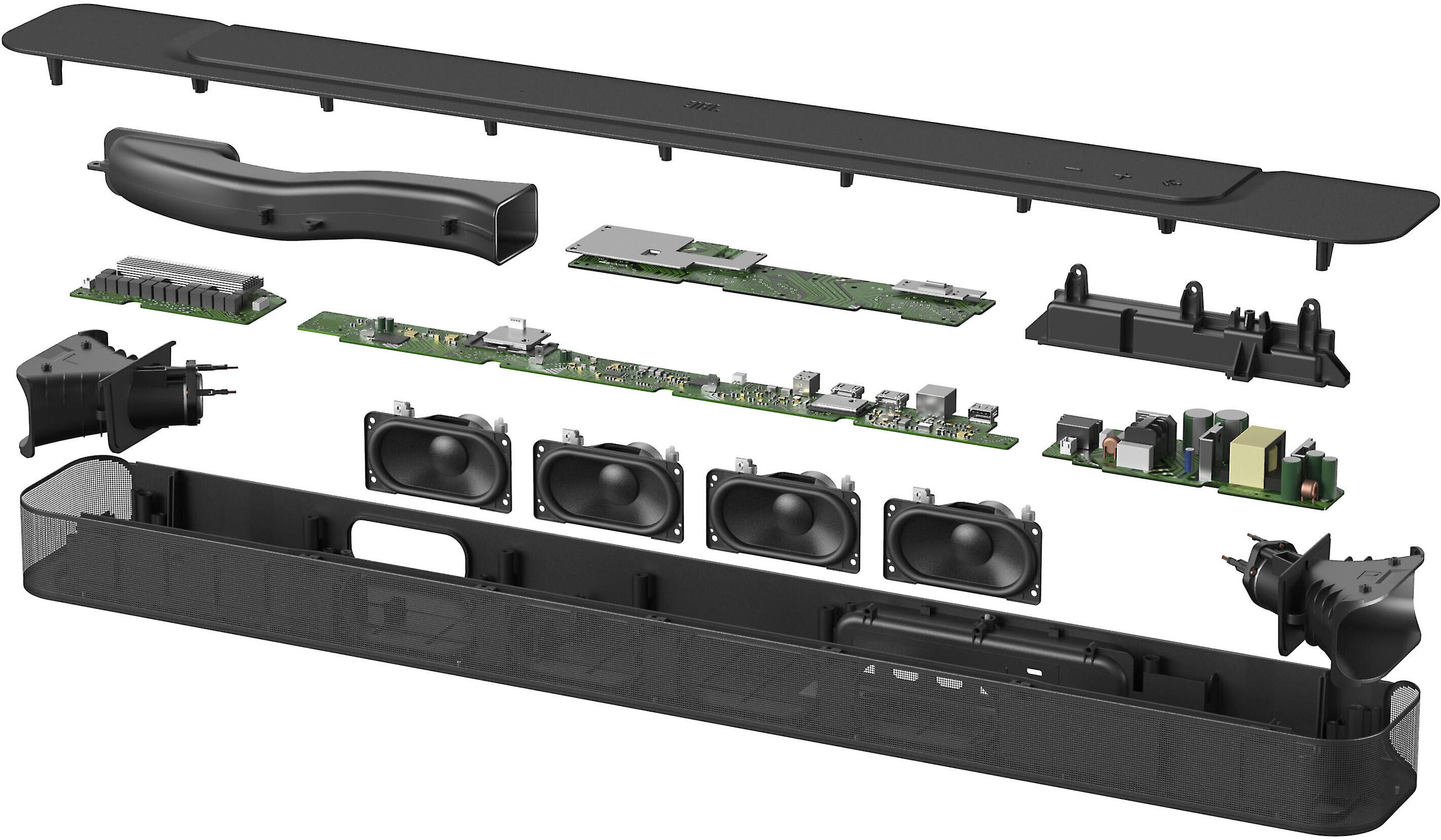



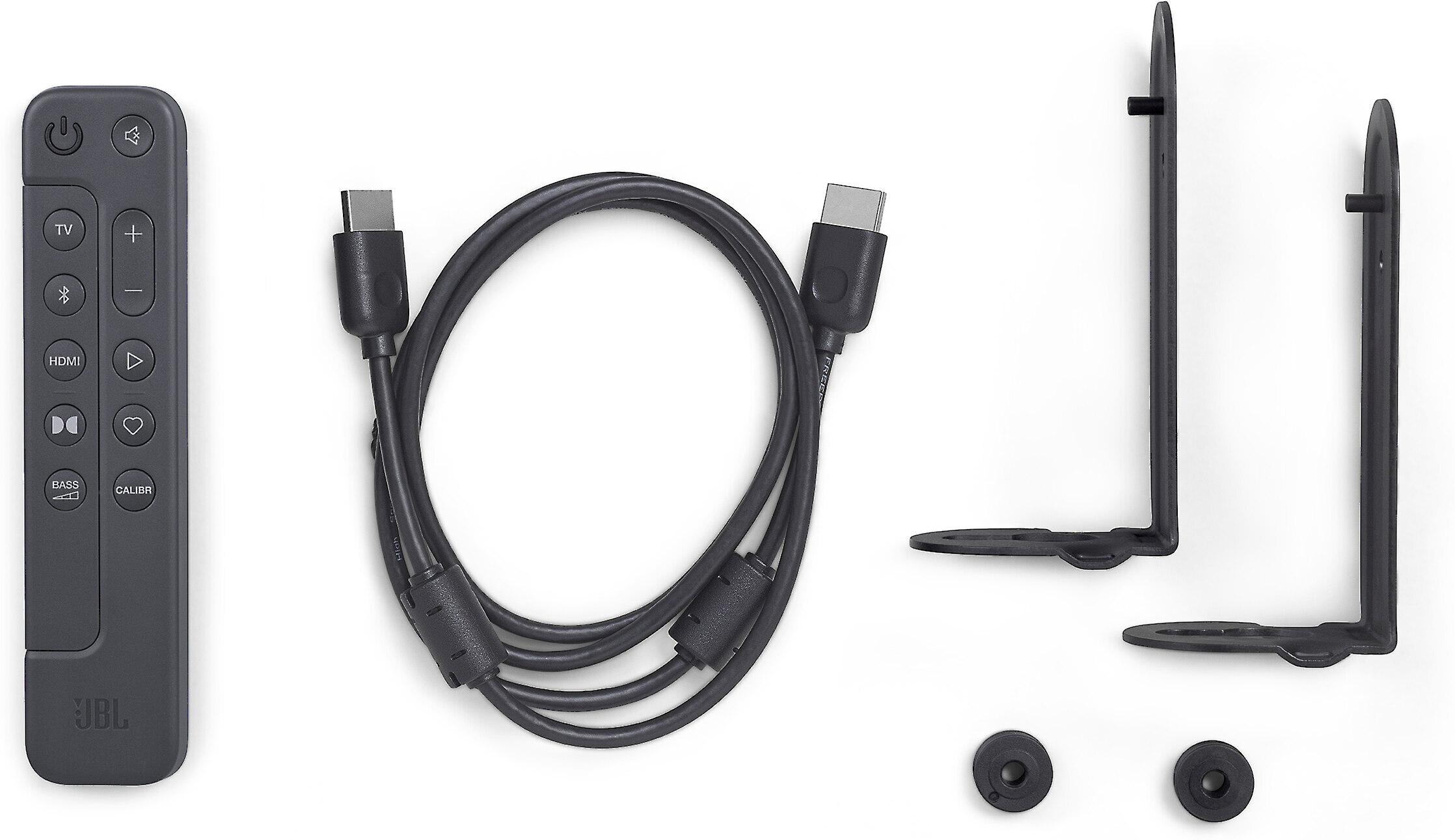














$399.95 Original price was: $399.95.$299.95Current price is: $299.95.
When JBL Bar 300 launched in late 2022, it represented an interesting shift in the soundbar market - bringing premium features like Dolby Atmos down to a more accessible price point. After extensive testing across various content types, we've found it offers an impressive balance of features and performance that makes it worth considering for many home setups.
Soundbars have come a long way from simple TV speaker replacements. The latest generation, including the JBL Bar 300, incorporates sophisticated audio processing and smart features that were previously reserved for high-end systems. While traditional surround sound systems still reign supreme for pure audio performance, modern soundbars have narrowed the gap significantly while offering superior convenience.
The Bar 300's 260W output might not sound impressive compared to systems advertising 1000W+, but raw power numbers don't tell the whole story. In our testing, this soundbar filled medium to large rooms with clear, dynamic audio that significantly outperformed TV speakers.
The virtual Dolby Atmos implementation, while not matching dedicated ceiling speakers, creates a convincing sense of height in scenes like rainfall or overhead aircraft. JBL's MultiBeam technology (which uses precisely angled speakers to bounce sound off walls) helps create a wider soundstage that extends beyond the physical width of the soundbar.
What really impressed us was the bass response without a separate subwoofer. During action scenes in movies like "Dune," the Bar 300 delivered satisfying impact while maintaining clarity. It won't shake your floors like a dedicated sub, but it strikes an excellent balance for apartments or spaces where a separate subwoofer isn't practical.
The built-in smart features feel thoroughly modern. We found the Wi-Fi connectivity reliable, and the integration with popular streaming platforms works seamlessly. The ability to say "Hey Google, play Spotify on the soundbar" or use AirPlay from an iPhone adds genuine convenience to daily use.
The JBL One app deserves special mention - it's intuitive and offers meaningful customization options without overwhelming users with technical jargon. The automatic room calibration feature, which uses a built-in microphone to optimize sound for your space, makes a noticeable difference in audio quality.
In our home theater testing, the JBL Bar 300 showed its versatility:
While not complicated, setup requires some attention to detail. The eARC connection (which allows high-quality audio passage between TV and soundbar) needs both devices to be HDMI 2.1 compatible for best results. We recommend following the app's guided setup process for optimal performance.
At its price point, the Bar 300 competes with both budget all-in-one solutions and entry-level traditional surround sound systems. The feature set and performance justify the investment for most users, particularly those who:
After extended use, certain features stand out:
The Bar 300's performance varies based on room setup. We found it works best in:
The inclusion of HDMI 2.1, regular firmware updates, and comprehensive streaming support suggests the Bar 300 will remain relevant for years. JBL's track record of software support is strong, and the hardware capabilities leave room for feature enhancement through updates.
The JBL Bar 300 represents a thoughtful balance between performance, features, and practicality. While it won't replace a full surround sound system, it offers significant improvements over TV audio and basic soundbars. The integration of modern features like Dolby Atmos, smart streaming, and room calibration makes it a compelling option for those seeking better audio without the complexity of traditional home theater setups.
For urban dwellers, apartment residents, or anyone wanting improved audio without the hassle of multiple speakers and wires, the Bar 300 delivers impressive performance in a refined package. While there are cheaper options available, the combination of features, sound quality, and user-friendly design makes it a worthy investment for those seeking a versatile audio solution that will remain relevant for years to come.
Yes, the JBL Bar 300 offers good value for those wanting Dolby Atmos and smart features in a compact package. While not the cheapest option, its performance, build quality, and feature set justify the price, especially for apartments and medium-sized rooms.
No, it doesn't require a subwoofer. While it won't match the deep bass of systems with dedicated subwoofers, its built-in bass capabilities are impressive for most home theater uses, delivering satisfying low frequencies for movies and music.
The virtual Dolby Atmos effect is convincing for a single-unit soundbar. While it can't match dedicated ceiling speakers, it creates a noticeable height effect for movies and shows, especially in rooms with standard-height ceilings.
Yes, it excels at music streaming with built-in Wi-Fi, Bluetooth, AirPlay, and Chromecast support. The sound quality is well-balanced for music, and multiple streaming options make it very versatile.
Setup is straightforward but requires attention to detail. The JBL One app guides you through the process, including room calibration. The main connection is via HDMI eARC to your TV, with optional Wi-Fi setup for streaming features.
Yes, it's compatible with Alexa, Google Assistant, and Siri. You can control playback, volume, and streaming services using voice commands through your existing smart speakers.
It performs best in small to medium-sized rooms up to about 350 square feet. The 260W output provides enough volume for most living rooms and home theater spaces, though larger rooms might benefit from more powerful systems.
Yes, it fully supports 4K passthrough with HDR10 and Dolby Vision compatibility. The HDMI eARC connection ensures the highest quality audio and video transmission between your TV and the soundbar.
Dialog clarity is a strength thanks to the PureVoice technology. It automatically enhances voice frequencies during movies and TV shows, making it easier to hear conversations without raising the overall volume.
Yes, wall mounting hardware is included in the box. At 5.5 lbs and 32.3 inches wide, it's manageable for wall mounting and looks sleek under wall-mounted TVs. Just ensure proper placement for optimal sound projection.
We've done our best to create useful and informative comparisons to help you decide what product to buy. Our research has used advanced automated methods to create this comparison and perfection is not possible - please contact us for corrections or questions. These are the sites we've researched in the creation of this article: whathifi.com - safeandsoundhq.com - youtube.com - cnet.com - mm.jbl.com - jbl.com - bestbuy.com - support.jbl.com - dell.com - walmart.com
| JBL Bar 300 5.0 Soundbar |
|---|
| Total Power Output - Determines overall volume capability and dynamic range: 260W |
| Audio Channels - Indicates speaker configuration for surround effects: 5.0 |
| Dolby Atmos Support - Enables overhead and 3D sound positioning: Yes |
| MultiBeam Technology - Creates wider soundstage through acoustic beam-forming: Yes |
| PureVoice - Enhances dialogue clarity during action scenes: Yes |
| Frequency Response - Shows bass to treble range capability: 50Hz - 20kHz |
| HDMI Ports - For connecting to TV and other devices: 1 in, 1 out (eARC) |
| Wireless Connectivity - For streaming audio: Bluetooth 5.0, Wi-Fi, AirPlay, Chromecast |
| HDR Support - Ensures compatibility with latest video formats: HDR10, Dolby Vision |
| Room Calibration - Optimizes sound for your specific space: Yes, via built-in mic |
| Length: 32.3 inches |
| Height: 2.2 inches |
| Depth: 4.1 inches |
| Weight: 5.5 lbs |
| Power Consumption Standby - Important for energy efficiency: < 2.0W |
The JBL Bar 1000 takes a dramatically different approach with its 7.1.4 channel configuration, including four dedicated up-firing speakers for true Dolby Atmos effects, detachable wireless rear speakers, and a powerful 10" subwoofer. This premium system delivers significantly more immersive sound, with genuine overhead effects during movies and precise surround placement that the Bar 300 simply cannot match. The included wireless surround speakers cleverly solve cable management issues by recharging when attached to the main soundbar, while the dedicated subwoofer provides deep, impactful bass that brings action scenes to life.
At $1,139.95, the Bar 1000 represents a substantial price jump but justifies its cost for serious home theater enthusiasts who want cinematic sound quality. While the Bar 300 excels at dialogue clarity in small to medium rooms, the Bar 1000's 880-watt system fills larger spaces with authority and maintains excellent sound separation even during complex action sequences. The addition of multiple HDMI inputs, advanced room calibration, and true Atmos support makes it a more future-proof investment for dedicated home theater setups, though its larger size and multiple components require more thoughtful placement and setup time.
🤖 Read Detailed Comparison
👌JBL Bar 1000 Surround Sound System with 7.1.4 Channel Soundbar, 10" Wireless Subwoofer, Detachable Rear Speakers, and Dolby Atmo Details
💵 See JBL Bar 1000 Surround Sound System with 7.1.4 Channel Soundbar, 10" Wireless Subwoofer, Detachable Rear Speakers, and Dolby Atmo Price
The Yamaha SR-B30A Sound Bar ($279.95) takes a different approach with its dual built-in subwoofers and focus on straightforward performance. Rather than emphasizing virtual surround effects, it delivers punchy, direct sound with impressive bass response that doesn't require additional components. This integrated design proves particularly effective in small to medium-sized rooms, where its 120W of power and purpose-built bass drivers create a cohesive soundstage that works especially well for music and dialogue-heavy content.
While it lacks the JBL's advanced streaming features and Dolby Atmos processing, the Yamaha SR-B30A offers excellent value by nailing the fundamentals. Its simpler plug-and-play setup, clear dialogue enhancement, and robust bass performance provide immediate benefits without the complexity of network configuration or room calibration. For viewers who prioritize reliable sound quality over cutting-edge features, the Yamaha's $70 lower price point and integrated subwoofers make it a compelling alternative, particularly in apartments or smaller viewing spaces where a separate subwoofer might be impractical.
🤖 Read Detailed Comparison
👌Yamaha SR-B30A Sound Bar with Built-In Subwoofers Details
💵 See Yamaha SR-B30A Sound Bar with Built-In Subwoofers Price
The Yamaha SR-B40A takes a different approach to sound enhancement, pairing a straightforward soundbar with a powerful wireless 6.5-inch subwoofer. This traditional 2.1 configuration delivers noticeably deeper bass and more impact during explosive movie scenes compared to the JBL's built-in bass drivers. While it lacks advanced features like Wi-Fi streaming and room calibration, the Yamaha's Clear Voice technology proves equally effective at enhancing dialogue clarity, and its simpler plug-and-play setup will appeal to users who prioritize ease of use over sophisticated features.
At $349, the Yamaha SR-B40A represents excellent value for those primarily focused on audio performance rather than smart features. Its dedicated subwoofer provides more powerful and adjustable bass, while the simpler configuration means less potential for technical issues over time. Though it doesn't match the JBL's virtual surround capabilities or streaming options, the Yamaha delivers where it matters most for many users: clear dialogue, impactful bass, and reliable performance for both TV and music playback. The separate subwoofer also offers more flexibility in placement and the potential for future upgrades.
🤖 Read Detailed Comparison
👌Yamaha SR-B40A 2.1-Channel Sound Bar with Wireless Subwoofer Details
💵 See Yamaha SR-B40A 2.1-Channel Sound Bar with Wireless Subwoofer Price
The Bose TV Speaker ($199.99) takes a fundamentally different approach, focusing on simplicity and dialogue clarity rather than advanced features. Its straightforward setup and operation make it particularly appealing for users who want better TV sound without the complexity of surround sound processing or multiple audio formats. The compact design and dedicated dialogue mode have earned praise from users who primarily watch news, sports, and TV shows, especially in smaller rooms where the improved vocal clarity makes a noticeable difference in everyday viewing.
While it lacks the JBL's Dolby Atmos capabilities and advanced streaming features, the Bose TV Speaker delivers impressive stereo performance for its price point. The ability to add an optional subwoofer provides some flexibility for future upgrades, though the basic connectivity options (just optical and Bluetooth) might feel limiting for home theater enthusiasts. For those seeking a simple TV audio upgrade at a more modest price point, the Bose offers solid value, particularly when space is limited or when elaborate surround sound isn't a priority.
🤖 Read Detailed Comparison
👌Bose TV Speaker Soundbar Details
💵 See Bose TV Speaker Soundbar Price
For those seeking a more premium home theater experience, the Polk Audio MagniFi Max AX offers significant upgrades at its higher $799 price point (often available around $559). The inclusion of a dedicated 10-inch wireless subwoofer and physical up-firing speakers for true Dolby Atmos delivers noticeably more impactful bass and more convincing overhead effects. The additional HDMI inputs and expandability to a 7.1.2 system with optional surround speakers make it a more future-proof choice for dedicated home theater setups.
However, these advantages come with trade-offs in terms of space requirements and cost. The Polk Audio MagniFi Max AX requires room for both the larger soundbar and separate subwoofer, and its premium features might be overkill for casual viewers or smaller rooms. While it undeniably delivers superior audio performance, particularly for movies and gaming, the price difference could be hard to justify if you're primarily using it for regular TV watching and occasional music playback. The Polk represents a significant step up in home theater capability, but its value proposition depends heavily on how much you prioritize premium audio features and have space for a more complex system.
🤖 Read Detailed Comparison
👌Polk Audio MagniFi Max AX 3.1.2 Soundbar Details
💵 See Polk Audio MagniFi Max AX 3.1.2 Soundbar Price
The Sony HT-A3000 ($498) distinguishes itself with superior audio performance, particularly in its bass response thanks to built-in dual subwoofers and more sophisticated sound processing. While it costs $150 more than the JBL, this premium delivers noticeably better sound quality, especially during movies and music playback. The 3.1 channel configuration, though technically fewer channels than the JBL, produces more convincing surround effects and better overall sound balance. Its standout feature is expandability - users can add wireless rear speakers and a separate subwoofer later, making it a more future-proof investment.
Where the Sony HT-A3000 really shines is in larger rooms and more demanding home theater applications. Its sound profile maintains clarity and impact at higher volumes, and the bass response adds tangible depth to movie soundtracks that the JBL can't match. While it offers fewer connectivity options and smart features, the focus on core audio performance pays off in real-world use. The Sony's room correction technology and integration with BRAVIA TVs also provide additional value for those invested in the Sony ecosystem, though the higher price point may be harder to justify for casual users who prioritize smart features over absolute sound quality.
🤖 Read Detailed Comparison
👌Sony HT-A3000 3.1ch Dolby Atmos Soundbar Details
💵 See Sony HT-A3000 3.1ch Dolby Atmos Soundbar Price
The Sonos Ray ($279) takes a different approach, focusing on simplicity and ecosystem integration rather than raw power and features. Its compact design and excellent dialogue clarity make it particularly effective in smaller spaces, while its superior music streaming capabilities and renowned Sonos app experience provide a more refined listening experience. Despite lacking HDMI and Bluetooth connectivity, the Ray's optical-only connection ensures broad TV compatibility, and its TruePlay room tuning technology (though limited to iOS devices) helps optimize sound for your specific space.
At $70 less than the Bar 300, the Sonos Ray represents better value for those primarily interested in music streaming and basic TV sound enhancement. Its major advantage lies in its expandability - users can later add a Sonos Sub and rear speakers for a true surround setup, or integrate it into a whole-home audio system with other Sonos products. While it doesn't match the Bar 300's power output or advanced features like Dolby Atmos, its focused approach to sound quality and ecosystem benefits make it a compelling choice for those who prioritize music and don't need additional connectivity options.
🤖 Read Detailed Comparison
👌Sonos Ray Soundbar Details
💵 See Sonos Ray Soundbar Price
The Sennheiser AMBEO Soundbar Plus ($1,499) represents a significant step up in both capabilities and price, offering premium features that set it apart in the soundbar market. Its sophisticated 7.1.4 virtual surround system, powered by nine precisely tuned speakers and advanced AMBEO processing technology, creates a notably more immersive sound experience. The multi-microphone room calibration system analyzes your space's acoustics in detail, optimizing the sound field for your specific environment. This results in more convincing height effects and surround sound placement, particularly noticeable during complex movie soundtracks and action sequences. The dual 4-inch woofers provide stronger bass response, though serious home theater enthusiasts might still want to add the optional subwoofer.
While the price difference is substantial, the AMBEO Plus justifies its premium positioning with superior sound quality and more refined features. Its advanced streaming capabilities, including high-resolution audio support and seamless integration with various music services, make it more versatile for both movie and music playback. The soundbar excels in larger rooms where its 400W of power and sophisticated processing can create a more theater-like experience. However, for many users, these additional capabilities may exceed their needs and budget, making the JBL Bar 300's more modest but capable performance a more practical choice.
🤖 Read Detailed Comparison
👌Sennheiser AMBEO Soundbar Plus Home Theater System Details
💵 See Sennheiser AMBEO Soundbar Plus Home Theater System Price
For those seeking a more immersive home theater experience, the JBL Bar 700 ($899) offers significant performance upgrades through its true 5.1 surround sound configuration. The addition of detachable wireless rear speakers and a powerful 10-inch subwoofer creates a genuinely cinematic experience that the Bar 300 can't match. With 620 watts of total power, the system delivers room-filling sound with precise spatial positioning and impactful bass that transforms movie watching and gaming. The wireless rear speakers run for about 10 hours per charge, offering flexible placement without permanent wiring.
While the Bar 700 commands a considerably higher price, its performance advantages justify the cost for dedicated home theater enthusiasts. The dedicated subwoofer adds weight and impact to action scenes, while the physical rear speakers create true surround effects that virtual processing can't replicate. The additional power also means better dynamic range and cleaner sound at higher volumes, making it more suitable for larger rooms. However, buyers should consider whether the improved performance and more complex setup are worth the premium over the Bar 300's simpler, more compact solution.
🤖 Read Detailed Comparison
👌JBL Bar 700 Dolby Atmos 5.1 Soundbar with Subwoofer Details
💵 See JBL Bar 700 Dolby Atmos 5.1 Soundbar with Subwoofer Price
The Bose Smart Ultra Soundbar represents a significant step up in performance and features, though at nearly double the price at $699. Its sophisticated 5.1.2 channel configuration with dedicated height speakers delivers noticeably more convincing Dolby Atmos effects, while its AI-powered dialogue enhancement technology offers superior speech clarity across all content types. The advanced ADAPTiQ room calibration system and PhaseGuide technology create a more refined, room-filling sound that's particularly noticeable in larger spaces, making it a more capable option for serious home theater enthusiasts.
However, the Bose Smart Ultra Soundbar's premium features and performance advantages need to be weighed against its significantly higher price point. While it offers more sophisticated audio processing, better channel separation, and superior performance with complex soundtracks, these improvements may not justify the additional cost for many users. Where it does shine is in larger rooms over 300 square feet, with multi-room audio setups, or for users who prioritize the most immersive possible sound from a single unit. The built-in Alexa integration and more mature smart features also make it a better fit for those deeply invested in smart home technology.
🤖 Read Detailed Comparison
👌Bose Smart Ultra Soundbar with Dolby Atmos Details
💵 See Bose Smart Ultra Soundbar with Dolby Atmos Price
The $1,399.99 Sony BRAVIA Theater Bar 9 takes a significantly different approach with its 13-speaker array and advanced spatial processing. Where the JBL focuses on simplicity and value, the Sony creates a more sophisticated sound stage using its 360 Spatial Sound Mapping technology and dedicated up-firing speakers. The result is more convincing Dolby Atmos performance and better instrument separation for music, particularly noticeable in larger rooms. The Sony also offers expansion options with wireless rear speakers and a subwoofer, plus advanced features like Sound Field Optimization and Acoustic Center Sync when paired with Sony TVs.
However, at four times the price of the JBL, the Sony Bar 9 needs to justify its premium positioning. While it delivers superior audio performance and more features, many users won't need its advanced capabilities for everyday TV viewing. The Sony makes sense for dedicated home theater enthusiasts, those with larger rooms, or users planning to expand their system over time. For typical living rooms and casual viewing, the JBL's focused performance and value proposition remain compelling, even if it can't match the Sony's technical sophistication.
🤖 Read Detailed Comparison
👌Sony BRAVIA Theater Bar 9 Soundbar Details
💵 See Sony BRAVIA Theater Bar 9 Soundbar Price
The Klipsch Flexus Core 100 ($349.99) takes a notably different approach, focusing on superior stereo performance and future expandability rather than all-in-one surround simulation. Its standout feature is the dual 4-inch built-in subwoofers, which deliver noticeably stronger bass without requiring a separate subwoofer. For music lovers and those who prioritize audio quality over smart features, the Klipsch's aluminum cone drivers and premium construction provide more refined sound, especially noticeable in complex musical passages and dialogue-heavy scenes.
While both soundbars compete at the same price point, they serve different user needs. The Klipsch excels as a foundation for a larger system, offering the ability to add wireless surrounds and a subwoofer later. However, it lacks the JBL's smart features and automatic room calibration, offering only basic Bluetooth streaming instead of WiFi, AirPlay, and Chromecast options. The choice between them largely depends on whether you value immediate surround sound capabilities and smart features, or superior stereo performance with the potential for future expansion.
🤖 Read Detailed Comparison
👌Klipsch Flexus Core 100 Soundbar Details
💵 See Klipsch Flexus Core 100 Soundbar Price
The Sonos Beam Gen 2 stands out with its superior audio processing capabilities, delivering more precise Dolby Atmos effects and exceptional dialogue clarity that makes every word crisp and intelligible. Its eARC connection supports higher-quality audio formats, and the advanced room calibration through TruePlay (though limited to iOS devices) creates a more tailored listening experience. Perhaps most importantly, the Beam Gen 2 offers significant expandability options - users can add surrounds and a subwoofer later, though this flexibility comes at a premium price point that's $100 more than the Bar 300.
Where the Beam Gen 2 really differentiates itself is in its ecosystem integration and long-term value proposition. The Sonos Beam Gen 2 features built-in voice assistants, a more refined app experience, and seamless multi-room audio capabilities that make it part of a larger home audio solution. However, its bass response isn't as robust without adding the optional subwoofer, and its more compact size, while great for smaller rooms, doesn't create quite as wide a soundstage as the Bar 300. The Beam Gen 2's reliance on WiFi over Bluetooth might also be a limitation for some users who prefer simple device pairing.
🤖 Read Detailed Comparison
👌Sonos Beam Gen 2 Soundbar Details
💵 See Sonos Beam Gen 2 Soundbar Price
The Sennheiser AMBEO Soundbar Mini matches the JBL Bar 300's price point while taking a notably different approach to sound reproduction. Its standout feature is the advanced AMBEO virtualization technology, which creates a more convincing 7.1.4 channel experience compared to the JBL's basic virtual processing. The AMBEO's superior room calibration system, using multiple microphones, delivers better-optimized sound for challenging room layouts, while its deeper bass extension to 43Hz provides more impact for movie soundtracks without requiring a separate subwoofer.
Where the AMBEO Mini really differentiates itself is in overall sound refinement and spatial audio performance. While it requires more setup time and technical engagement than the JBL, it rewards users with noticeably better Dolby Atmos reproduction and more detailed music playback. The AMBEO Mini presents a compelling alternative for users willing to invest time in optimizing their setup, though its more complex interface and calibration process might not appeal to those seeking a simpler plug-and-play solution. Both soundbars represent excellent value at $399, but they serve different user priorities - the AMBEO Mini favoring audio performance over convenience.
🤖 Read Detailed Comparison
👌Sennheiser AMBEO Soundbar Mini Details
💵 See Sennheiser AMBEO Soundbar Mini Price
The Klipsch Flexus Core 200 3.1.2 ($499) stands apart with its dedicated upfiring Atmos speakers and dual built-in 4-inch subwoofers, delivering noticeably better bass impact and more precise sound placement than the JBL Bar 300. The Klipsch's horn-loaded tweeter provides more natural dialogue clarity, while its true 3.1.2 channel configuration creates genuine overhead effects rather than relying on virtual processing. For movie enthusiasts, these physical advantages translate to more cinematic sound, especially in scenes with complex audio mixing or heavy bass content.
While it commands a $150 premium over the JBL, the Klipsch Flexus Core 200 justifies its higher price through superior audio performance and future expandability. The ability to add wireless surround speakers and subwoofers later makes it more versatile for growing home theater systems. However, it sacrifices some convenience features, lacking the JBL's built-in streaming capabilities and simplified setup process. For users prioritizing sound quality over smart features and willing to spend time optimizing their setup, the Klipsch offers a more capable and future-proof solution, particularly in medium to large rooms where its stronger output and more precise sound staging can truly shine.
🤖 Read Detailed Comparison
👌Klipsch Flexus Core 200 3.1.2 Soundbar Details
💵 See Klipsch Flexus Core 200 3.1.2 Soundbar Price
The $697.99 Samsung HW-Q800D takes a more traditional home theater approach with its 5.1.2 channel configuration, including a dedicated wireless subwoofer and physical height channels for Dolby Atmos effects. Its standout features include the powerful 8-inch subwoofer that delivers noticeably deeper bass, SpaceFit Sound Pro room calibration that continuously optimizes audio performance, and Q-Symphony technology that integrates with Samsung TV speakers. In larger rooms especially, the extra power and physical speaker separation create a more convincing surround sound experience with better dynamics and impact during action scenes.
While it commands a significant price premium, the Samsung justifies its cost for dedicated home theater enthusiasts who want the best possible audio performance. The physical height channels create more authentic overhead effects than virtual processing, and the separate subwoofer provides deeper, more controlled bass that's especially noticeable during explosive movie scenes and bass-heavy music. However, this improved performance comes with additional space requirements and setup complexity that may not suit every living situation. For those with the space and budget who prioritize audio quality over simplicity, the Samsung HW-Q800D delivers a more premium home theater experience that's particularly well-suited to rooms larger than 200 square feet.
🤖 Read Detailed Comparison
👌Samsung HW-Q800D 5.1.2 Channel Soundbar Details
💵 See Samsung HW-Q800D 5.1.2 Channel Soundbar Price
The $799.99 LG S90TR takes a dramatically different approach with its true 7.1.3 channel configuration, including a wireless subwoofer and dedicated rear speakers. This more traditional home theater setup delivers noticeably more immersive sound, particularly during movies and gaming sessions. The dedicated subwoofer provides deeper, more impactful bass that you can feel during intense scenes, while the rear speakers create genuine surround sound rather than relying on virtual processing. The LG's advanced room calibration system and support for high-resolution audio formats also help justify its higher price point.
While it costs significantly more and requires more space for setup, the LG S90TR provides substantial benefits for viewers who prioritize audio quality and immersion. Its superior power handling (540W vs 260W) makes it better suited for larger rooms, and the additional speakers create a more convincing Dolby Atmos experience. However, these advantages come with the complexity of placing and managing multiple speakers, making it a better fit for dedicated home theater enthusiasts rather than those seeking a simple TV audio upgrade. The choice between these systems ultimately depends on your room size, budget, and how important true surround sound is to your viewing experience.
🤖 Read Detailed Comparison
👌LG S90TR 7.1.3 Channel Soundbar with Wireless Subwoofer and Rear Speakers - Soundbar Details
💵 See LG S90TR 7.1.3 Channel Soundbar with Wireless Subwoofer and Rear Speakers - Soundbar Price
The Samsung HW-B550D ($177.99) takes a more traditional approach with its 3.1 channel configuration and separate wireless subwoofer, offering noticeably stronger bass impact and room-filling sound at a significantly lower price point. While it lacks the advanced processing and smart features of the JBL, its dedicated center channel delivers excellent dialogue clarity, and the included subwoofer provides deeper, more powerful low frequencies that you can physically feel during movies and music. The simpler plug-and-play setup and straightforward controls make it particularly appealing for users who prioritize core audio performance over smart features.
Where the Samsung really stands out is in its value proposition, delivering impressive sound quality and practical features at nearly half the price of the JBL. While it doesn't offer Dolby Atmos or Wi-Fi streaming capabilities, its DTS Virtual:X processing still creates a convincing surround effect, and the separate subwoofer gives it an advantage in larger rooms or when powerful bass is desired. For home theater enthusiasts focused primarily on movie and TV performance rather than smart home integration, the Samsung HW-B550D represents an excellent balance of performance and affordability.
🤖 Read Detailed Comparison
👌Samsung HW-B550D 3.1 Channel Sound Bar Details
💵 See Samsung HW-B550D 3.1 Channel Sound Bar Price
The Samsung B-Series ($277.99) takes a different approach with its traditional 5.1 setup, featuring a wireless subwoofer that delivers noticeably deeper bass than the JBL's all-in-one design. This dedicated subwoofer makes a real difference during explosive movie scenes and bass-heavy music, providing the kind of room-filling low frequencies that simply can't be matched by virtual processing. The Samsung also offers excellent value, coming in at about $70 less than the JBL while including features like DTS Virtual:X processing and multiple sound modes optimized for different content types.
Where the Samsung falls short is in its more limited connectivity options and less sophisticated digital processing. While it handles basic home theater duties well, it lacks WiFi streaming capabilities and doesn't support Dolby Atmos like the JBL. However, for viewers primarily focused on movies and TV shows who want impactful bass without breaking the bank, the Samsung B-Series represents a compelling alternative that prioritizes core audio performance over premium features.
🤖 Read Detailed Comparison
👌Samsung B-Series 5.1 Channel Soundbar with Subwoofer Details
💵 See Samsung B-Series 5.1 Channel Soundbar with Subwoofer Price
The Sonos Arc ($564.44) represents a significant step up in audio performance with its sophisticated 11-driver array and true upward-firing speakers for Dolby Atmos. While it commands a higher price, the difference in sound quality is immediately noticeable, particularly in dialogue clarity and spatial audio precision. The Arc's more powerful bass response and wider soundstage create a more cinematic experience even without a subwoofer, though adding one remains an option for enthusiasts. Built-in voice assistants and Sonos's renowned TruePlay room calibration technology offer a level of convenience and sound optimization that surpasses the Bar 300's capabilities.
However, the premium features of the Sonos Arc come with a significantly higher investment, costing about $215 more than the Bar 300. Its larger physical size (45 inches) may also be excessive for smaller rooms or TVs under 55 inches. While the Arc's sound quality and feature set are superior, the value proposition becomes more complex when considering space constraints and budget limitations. The Arc's lack of Bluetooth connectivity might also be a drawback for some users, though its robust WiFi streaming options and AirPlay 2 support generally provide better audio quality for those invested in the Apple ecosystem.
🤖 Read Detailed Comparison
👌Sonos Arc Wireless Sound Bar with Dolby Atmos, Apple AirPlay 2, and Built-in Voice Assistant (White) Details
💵 See Sonos Arc Wireless Sound Bar with Dolby Atmos, Apple AirPlay 2, and Built-in Voice Assistant (White) Price
The Samsung HW-Q990D ($1,997.99) exists in a completely different league, offering true 11.1.4 channel surround sound with dedicated rear speakers and a powerful wireless subwoofer. Where the JBL attempts to create virtual surround effects from a single bar, the Samsung delivers genuine cinematic audio through 22 separate drivers, including four up-firing speakers for Dolby Atmos effects. The result is dramatically more immersive, with precise sound placement and thunderous bass that the JBL simply cannot match. For gaming enthusiasts, the Samsung also includes HDMI 2.1 support with 4K/120Hz passthrough and VRR compatibility.
However, this premium performance comes at nearly six times the price, and requires significantly more space for its four-piece configuration. While the Samsung HW-Q990D represents the pinnacle of soundbar technology with features like SpaceFit Sound Pro room correction and Q-Symphony integration with Samsung TVs, many users may find the JBL's simpler setup and more modest price point better suited to their needs. The Samsung is undoubtedly superior in every performance metric, but the value proposition depends entirely on your room size, budget, and how important true surround sound is to your viewing experience.
🤖 Read Detailed Comparison
👌Samsung HW-Q990D 11.1.4 Channel Sound Bar Details
💵 See Samsung HW-Q990D 11.1.4 Channel Sound Bar Price
The Samsung HW-S700D 3.1 Channel Slim Soundbar ($397.99) takes a different approach to home theater audio with its dedicated wireless subwoofer and 3.1 channel configuration. While it costs about $50 more, the separate subwoofer delivers noticeably deeper bass and more impact during movie explosions and action scenes. Its dedicated center channel also provides clearer dialogue, especially in complex soundtracks, and the SpaceFit Sound technology does an excellent job optimizing audio for your specific room layout.
Where the Samsung really stands out is its integration with Samsung TVs through features like Q-Symphony, which lets the soundbar work in harmony with your TV's speakers instead of replacing them. However, even without a Samsung TV, the separate subwoofer and clearer dialogue make it a compelling alternative if you prioritize movie performance over music playback and don't mind finding space for the additional subwoofer unit. The tradeoff is slightly less immersive surround effects compared to the JBL's 5.0 channel configuration, though this can be addressed by adding optional wireless rear speakers later.
🤖 Read Detailed Comparison
👌Samsung HW-S700D 3.1 Channel Slim Soundbar Details
💵 See Samsung HW-S700D 3.1 Channel Slim Soundbar Price
The $698 Sony HT-A8000 takes a notably different approach with its modular design and superior spatial audio processing. Where the JBL Bar 300 aims to be a complete solution, the Sony serves as a foundation for a more expansive system, offering the ability to add wireless rear speakers and a choice of two different subwoofers. Its standout 360 Spatial Sound Mapping technology creates a more convincing surround sound field, and when paired with a Sony TV, it can even use the TV's speakers as an additional center channel for enhanced dialogue clarity. The sound stage is noticeably wider and more precise, particularly in larger rooms where its additional power becomes evident.
For those willing to invest in their home theater setup over time, the Sony HT-A8000 provides a clear upgrade path that the JBL can't match. However, this flexibility comes at a significant price premium - nearly double the cost of the JBL before any additional speakers. While the Sony delivers superior technical performance and more advanced features like HDMI 2.1 gaming support and AI-enhanced voice processing, these benefits may not justify the extra cost for casual users or those with smaller spaces. The real value proposition depends heavily on whether you plan to expand the system later with the optional speakers, which can push the total cost well over $1,500.
🤖 Read Detailed Comparison
👌Sony HT-A8000 BRAVIA Theater Bar 8 Soundbar Details
💵 See Sony HT-A8000 BRAVIA Theater Bar 8 Soundbar Price
The Sonos Arc Ultra represents a significant step up in both capability and price at $1,799, offering a more sophisticated 9.1.4 channel configuration compared to the JBL's 5.0 setup. Its standout features include advanced room calibration through Trueplay, superior Dolby Atmos performance with more precise sound placement, and the ability to expand the system with wireless rear speakers and a dedicated subwoofer. The Sonos also delivers notably better dialogue clarity through its AI-enhanced voice processing and creates a wider, more immersive soundstage that's particularly noticeable in larger rooms.
However, the question of value is more complex. While the Sonos Arc Ultra undeniably delivers better audio performance, its premium price tag is more than five times that of the JBL Bar 300. The Sonos ecosystem integration and future expandability are valuable for those planning a whole-home audio system, but many users may find the JBL's performance more than adequate for their needs. The Sonos makes the most sense for dedicated home theater enthusiasts with larger rooms and budgets who prioritize sound quality and want the option to expand their system over time.
🤖 Read Detailed Comparison
👌Sonos Arc Ultra Dolby Atmos Soundbar Details
💵 See Sonos Arc Ultra Dolby Atmos Soundbar Price
The LG S95TR takes a fundamentally different approach to home theater audio, offering a premium 9.1.5 channel system with dedicated surround speakers and multiple up-firing drivers. Where the JBL Bar 300 relies on virtual processing, the LG delivers true physical surround sound with its wireless rear speakers and separate subwoofer. This creates a more authentic cinema experience, particularly noticeable during action scenes and with Dolby Atmos content. The addition of WOW Orchestra technology, which integrates with LG TV speakers, and advanced room correction further elevates the audio performance in larger spaces.
At $999, the LG S95TR represents a significant price jump but justifies its premium position for serious home theater enthusiasts. The physical speaker separation and powerful 810W output provide a level of immersion that virtual processing simply can't match. However, this superior performance comes with added complexity - you'll need more space and time for optimal speaker placement. For those with larger rooms and a desire for true surround sound, the LG system delivers a more authentic home theater experience, though the JBL Bar 300 remains a compelling choice for smaller spaces and more casual viewing needs.
🤖 Read Detailed Comparison
👌LG S95TR 9.1.5 Channel Soundbar with Dolby Atmos Soundbar Details
💵 See LG S95TR 9.1.5 Channel Soundbar with Dolby Atmos Soundbar Price
The Polk Audio Signa S4 offers a more traditional home theater approach with its 3.1.2 configuration, including a wireless subwoofer and dedicated up-firing speakers for Dolby Atmos effects. At $269.85, it's actually less expensive while delivering more impactful bass and overhead sound effects that the JBL Bar 300 can't match. The inclusion of VoiceAdjust technology and various sound modes, including a dedicated night mode, makes it particularly versatile for different viewing situations. The wireless subwoofer can be positioned anywhere in the room, offering flexibility in setup while providing the kind of deep bass response that movie enthusiasts crave.
Where the JBL excels in streaming features and compact design, the Polk Audio Signa S4 focuses on pure home theater performance. Its dedicated center channel and subwoofer combination delivers clearer dialogue and more dramatic sound effects, though it does require more space and lacks some of the JBL's smart features like Wi-Fi streaming and voice assistant support. For movie and TV enthusiasts who prioritize audio performance over smart features, the Polk represents better value, especially considering its Dolby Atmos capabilities at a lower price point. However, those seeking a more streamlined setup or primarily using their soundbar for music might prefer the JBL's all-in-one approach.
🤖 Read Detailed Comparison
👌Polk Audio Signa S4 Dolby Atmos Soundbar with Wireless Subwoofer Details
💵 See Polk Audio Signa S4 Dolby Atmos Soundbar with Wireless Subwoofer Price
The Sony HT-A5000 ($640) represents a significant step up in home theater performance, offering true 5.1.2 channel audio with dedicated height speakers and a built-in subwoofer. Its advanced room calibration system and 360 Spatial Sound Mapping create a more convincing surround sound experience, particularly noticeable during Dolby Atmos content playback. The additional power output (450W compared to the JBL's 260W) provides more headroom for dynamic movie scenes, while the built-in subwoofer delivers deeper, more controlled bass response without requiring additional components.
However, these improvements come at more than twice the price of the JBL. The Sony HT-A5000 justifies its premium positioning with superior audio processing, better music streaming capabilities, and the option to expand with wireless rear speakers later. While it offers better overall performance, particularly for dedicated home theater use, the price difference is substantial enough that buyers should carefully consider their needs. Those with larger rooms or who prioritize immersive movie experiences will find the Sony's additional features and performance worth the investment, but it may be more than necessary for casual TV watching and music listening.
🤖 Read Detailed Comparison
👌Sony HT-A5000 5.1.2 Channel Home Theater Soundbar Details
💵 See Sony HT-A5000 5.1.2 Channel Home Theater Soundbar Price
$5,997.99 Original price was: $5,997.99.$5,797.99Current price is: $5,797.99.
$99.99 Original price was: $99.99.$69.99Current price is: $69.99.
$79.98 Original price was: $79.98.$58.95Current price is: $58.95.

